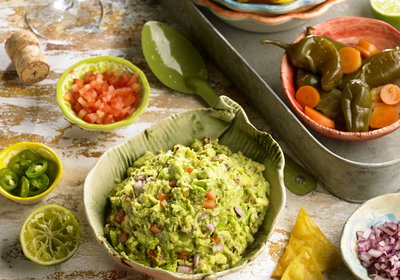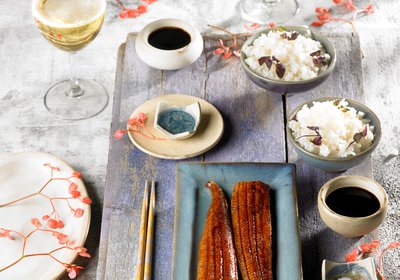Sushi


Rice and fresh fish are the basic ingredients of one of Japanese cuisine’s most famous dishes. Sushi is so popular these days that you can find it in lots of different places, and you can even make at home.
Based on advice from the Cava Regulatory Board and the molecular study carried out by François Chartier, an expert in aromas and a ‘Créateur d’harmonies’, we recommend pairing sushi with a traditional Cava (more than 9 months), but making it yourself by following this recipe.
With all its different ingredients, the pairing of sushi and a traditional Cava allows us to fully enjoy the flavours of raw fish, nori, rice and ginger.
There are different varieties of sushi, but for this recipe focuses on three in particular: nigiri, maki and futomaki.
Ingredients
You will also need
Esterilla
Papel film
Instructions
Method:
For this recipe, it is very important to have well cooked rice as a base and to carefully follow the steps for each format. To help with this, below you will find instructions for how to make each type:
Preparing the rice:
- First you need to remove excess starch. This is the most important step to make sure the rice is fluffy with separate grains. The rice should be rinsed in cold water, but not simply run under a cold tap. To rinse the rice well, put it in a bowl and swirl it through your hands, taking handfuls and stirring with your fingers to remove the starch. Repeat as many times as necessary until the water runs clear. You usually need to do this 7 to 8 times.
- Leave the clean rice in a bowl full of water for half an hour to let the grains of rice absorb as much water as possible. It is important to use the following ratio: 1 cup of rice to 1+¼ cups of water.
- You can make rice in a Japanese rice maker, but for this recipe we will use a saucepan. Put the rice and the water in a saucepan on a high heat and leave uncovered. When it comes to the boil, put the lid on and turn the heat down and leave it to cook for 20 minutes.
- Meanwhile, prepare the mixture that will be added to the rice. Now mix the sugar, salt and rice vinegar.
- Once the rice is cooked, put it in a bowl and season it with the mixture you prepared earlier. Use a rice spoon to help air the rice and cool it down. Once finished, cover the bowl with a damp cloth. You will use it later to prepare the different varieties.
Preparing the nigiri:
Nigiri is a type of sushi where the main ingredient sits on a bed of rice. We are going to make one using salmon and tuna, following this method:
- Use rice at room-temperature to make the nigiri. You will also need a bowl of water and a teaspoonful of rice vinegar to wet your hands as you make the rolls.
- With damp hands, take some rice and press it with your fingers against the palm of your hand. This will give you a small amount of rice that you can shape using your index finger until it is even, and the rice stays in place. Repeat this step to create as many nigiri pieces as desired.
- Before adding the raw fish (that you defrosted earlier), you should cut it into thin slices.
- Once the rice base of the nigiri is ready, spread a little wasabi (not too much as it is very spicy) on a slice of raw fish and place it on top of the rice.
- And now it is ready to serve.
Preparing maki:
Maki is a traditional type of sushi that is famous for its circular shape, nori covering, sushi rice and three fillings. For this recipe we will use raw fish, avocado and cucumber. The processes as follows:
- Cut the blocks of raw fish (that you defrosted earlier) into pieces measuring two fingers high by two fingers wide and eight fingers long.
- Cut each block into four strips. These will be used for the maki filling.
- Put a nori sheet on the Japanese bamboo mat with the matte side facing upwards. With wet hands, spread a thin layer of rice over the surface, leaving a gap of about two fingers at the top. This will help you to close the roll later.
- At the bottom, put a strip of avocado, a strip of cucumber and a strip of salmon or tuna. If you would like to try other flavours, now is the time to experiment.
- Now, roll the bamboo mat, starting from the end with the ingredients. Take hold of the mat where the ingredients are and gently roll it up until it meets the other end and forms a roll. It should be cylinder shaped.
- Press down with your hands on the mat to shape the maki. Do this all along the roll from one side to the other. Once the roll has taken shape you can remove the mat.
- Repeat the steps until you have as many cylinders as you want.
- Now you have a cylinder without the mat, it is time to cut it into sections. Wet a long, sharp knife. Cut the roll in half. Cut these two pieces in half and then cut the four pieces in half again. You will now have eight very symmetrical pieces, but the most important step is to clean the knife between each cut.
- Now it is ready to serve.
Preparing futomaki
Futomaki is maki’s big brother. Larger mats are usually used to make futomaki as the rolls are bigger than for maki.
To make futomaki, follow the same steps as for maki, but when adding the ingredients to the rolls, include a little bit of lettuce.
Preparing to serve:
Put the nigiri, maki and futomaki on a flat tray with a small bowl of soya and on one side and some pickled ginger and wasabi.
The dish is now ready to serve. Remember to serve your sushi with a glass of traditional Cava (more than nine months), to enjoy all the flavours of this fantastic Japanese recipe.
Tips
Fish: for this recipe it is very important to have a good piece of fish. Buy the best piece of fish you can and cut it correctly. You can ask the fishmonger to prepare the fish for sushi, but if they do not know how to, ask them to give you a clean fillet (no slices or loose pieces as they cannot be used in the roll). When you get home, freeze the fish and defrost it when you are ready to make sushi.
Before freezing the fish, use a sharp knife to remove dark patches. Remove the edges and try to make the block as rectangular as possible. It does not have to be perfect, but this shape will be easier to use.










